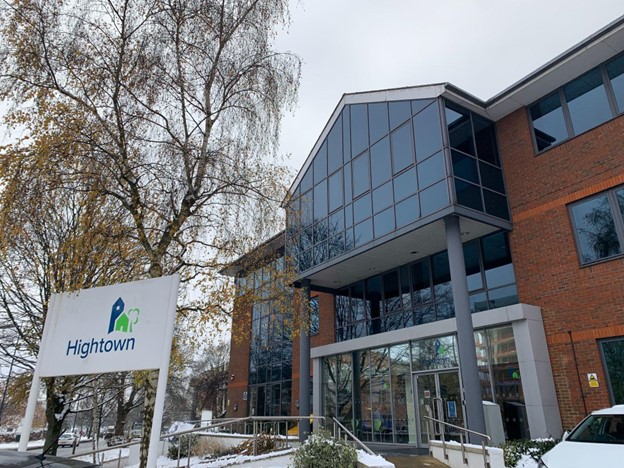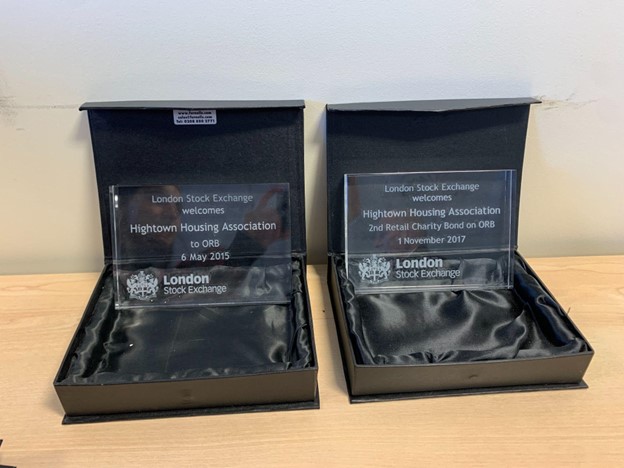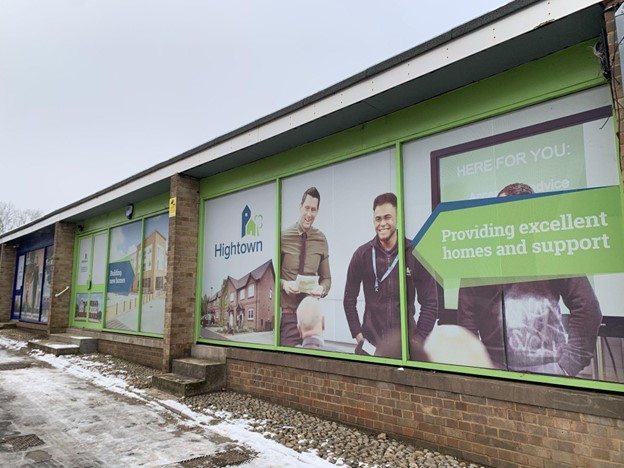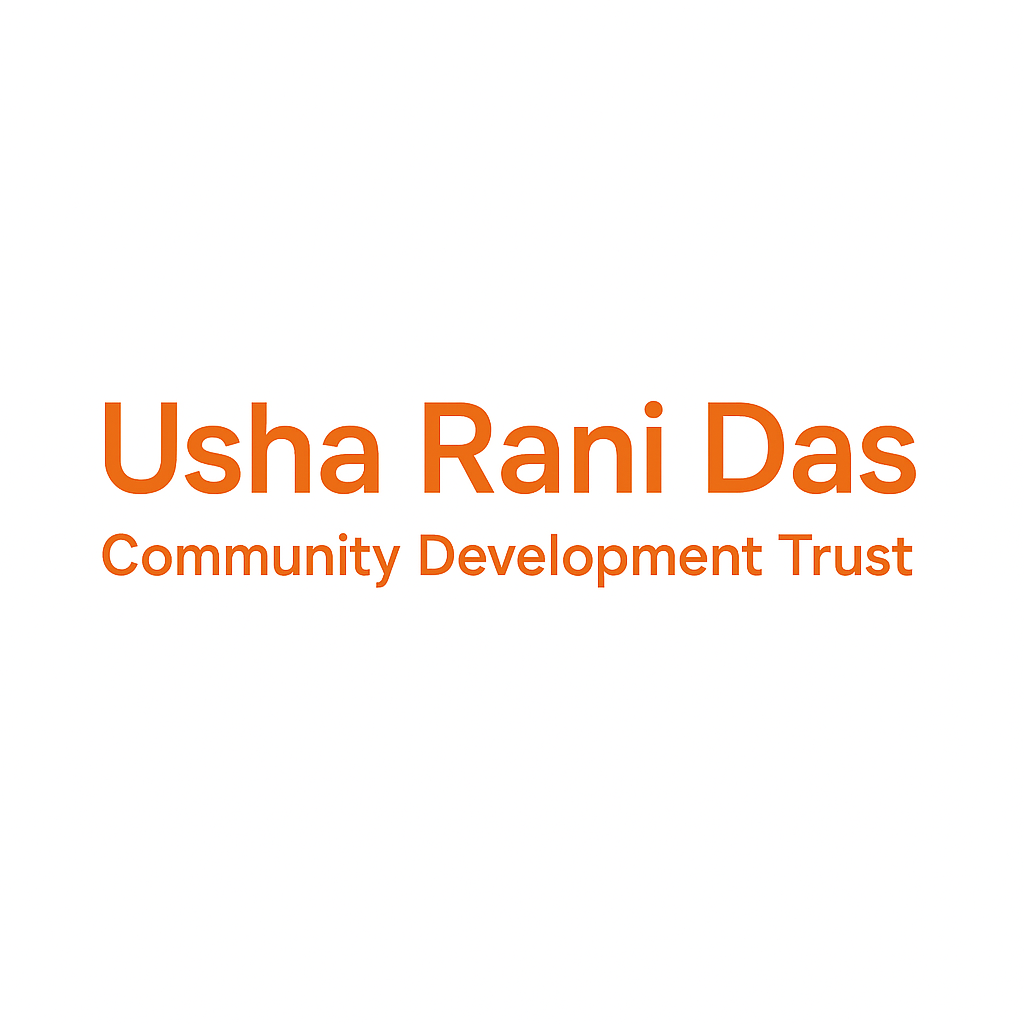learning-from-abroad
Since 2010, housing prices in Canada have skyrocketed by 105% and incomes have not increased proportionately. A recent report by Canada Mortgage and Housing Corporation has stated that the scale of the housing challenge is so large that governments cannot solve the problem on their own. An estimated 3.5 million new housing units are needed to achieve affordability by 2030, and this will require innovative financing and collaboration among all types of housing providers – be they non-profit, for-profit, or co-operative.
Many places in the UK are facing a similar challenge, where housing demand is outstripping supply. Recently, I had the opportunity to visit Hightown Housing, a charitable housing association in the United Kingdom that supports people who cannot afford to buy or rent a home at market price. I sat down with David Skinner, Director of Financial Services, and Neil Wray, Head of Treasury, to unpack the importance of Hightown’s work and learn how community investment has helped them to achieve greater impact. Our conversation follows below.

Q: How does Hightown develop affordable housing units?
A: There are two main streams through which Hightown develops affordable housing units. The first is through a planning agreement called Section 106. Through this agreement, when a developer acquires land, they have to designate a portion of the properties for social housing. Then housing associations, like Hightown, bid to purchase those properties. This has accounted for two-thirds of all of Hightown’s developments in the last year.
In other cases, Hightown will buy land, design the property, and contract a builder to construct them. This method allows for more direct control. We also offer care and supportive housing units uniquely designed for vulnerable populations such as homeless people, young people, mothers and young children, and people with learning disabilities.

Q: Hightown manages over 8,000 homes. How are these affordable homes financed?
A: Hightown uses a mixture of financing. Most of it is debt financing – so things like bank loans and loans from the capital markets. We are increasingly acquiring capital from institutional investors such as insurance companies and pension funds. We also use grants from the government and we reinvest any surplus Hightown makes back into the organization. We have also issued two retail charity bonds.
Q: How are charity bonds used to finance the affordable housing units?
A: We’ve issued charity bonds twice now. Individuals wanted to invest in their local housing and we were looking for unsecured financing without having to rely on the bank. Charity bonds enabled us to finance the development of affordable housing units as they were being developed. We did not have to wait until the assets were completed to finance the build. Charity bonds also raised publicity for us and our work.
In terms of the actual process, we established our financing need, worked with financial consultants, and engaged in lots of community consultations with potential investors. We then issued the bonds through the Retail Charity Bond plc. on the London Stock Exchange and our bond campaign was oversubscribed. Our first charity bond campaign in 2015 raised £27M within a few days. In 2017, we raised £31.5M in a similar time frame. Charity bonds were the perfect tool for us at that time.

Q: Are there any current developments that Hightown is working on?
A: Yes! Hightown is always working on new projects. We currently have over 40 active projects. One of our largest projects is on a site that used to be an industrial space with warehouses and car lots. We are spending £38M to develop 158 units. This is a combination of flats and houses that will be social housing, affordable rent housing, and shared ownership properties.
Q: What is the difference between social housing, affordable rent housing, and shared ownership properties?
A: Social housing is rented at around 60% of the market rent. Affordable rent housing is rented at 80% of the market rent. Shared ownership properties are intended to encourage individuals to climb the housing ladder. Individuals are able to own a portion of the house and rent the remainder. For example, someone may afford to own 60% of a house so they decide to put a down payment on that and get a mortgage. The remaining 40% of the house is still owned by Hightown, so individuals are responsible to pay rent to Hightown for that portion of the house. Ideally, individuals increase their percentage of ownership of the home until they own 100% of it and buy it out from Hightown.
Q: What impact does Hightown have on its residents and the community?
A: Hightown’s impact is difficult to quantify. But here are some key figures from our social impact report:
- 40% of general needs properties were let to homeless households in 2020/21
- 80 people moved from temporary homelessness services to stable housing
- 776 service users were supported to live with independence
- 40 unaccompanied asylum seeking minors were given accommodation and support
- Properties improved their energy efficiency rating from C to A/B through retrofits
- Households saved an average of £247 on fuel savings
- Only 1.75 tonnes of CO2 equivalent was emitted per home compared to the sector average of 2.53 tonnes

Q: What advice do you have for other housing organizations looking to replicate your model?
A: Go for it! We are all in this sector to solve the housing crisis so we need to develop strategies to do that. For Hightown, that means maximizing development opportunities and maintaining high quality accommodations. Different organizations face different challenges. It’s important not to be complacent and to continue overcoming challenges to achieve our shared bottom line – solving the housing crisis.
About this Blog Series
Hi, my name is Jasleen Bahia, and I was once an Intern at Tapestry Community Capital. I am now completing my degree in business with a focus on social finance, and I’m currently doing a semester abroad in Europe. While here, I am Tapestry’s Ambassador to the UK. This blog series documents my adventure abroad learning about the social finance ecosystem in the UK and connecting it to our growing community investment marketplace in Canada. I am eager to find out what we can learn, replicate and share!

In the United Kingdom, Music Venue Trust has launched the ‘Own Our Venues’ campaign, giving music supporters across the country a new opportunity to invest in the spaces they love. The campaign, which has garnered support from figures like Ed Sheeran and Sony Music, offers a prime example of how community investment can serve to rescue and maintain vital community assets.
To better understand Music Venue Trust and the ‘Own Our Venues’ campaign, I spoke with Matt Ottridge, the Music Venue Trust Ownership Coordinator.
The challenge faced by grassroots music venues
Over the last twenty years, many independent music venues in the United Kingdom have shut down. Mark Davyd, Founder of Music Venue Trust, says the main reason for closure is that people who run the independent music venues do not own their premises, and the landlords who do own them don’t care about the impact the venue is delivering. Music venues are often at the mercy of commercial landlords and rising rents, and this issue of ownership is underscored by other challenges such as noise complaints and chronic underinvestment.
According to Music Venue Trust, 93% of grassroots music venues are tenants with an average lease of 18 months. This prevents venues fully investing in their spaces because there is uncertainty about how long they will be able to stay put.
The ‘Own Our Venues’ campaign
Since 2014, Music Venue Trust has advocated for the protection, security, and improvement of UK grassroots music venues for the benefit of venues, communities, and artists. They provide free legal advice, a network for music venues to connect and collaborate, and a multitude of online resources to guide music venue operators. The ‘Own Our Venues’ campaign is one of the organization’s recent initiatives.
The aim of the ‘Own Our Venues’ campaign is to change the ownership model of grassroots music venues. Instead of private landlords owning the spaces and leasing them to music venue operators, Music Venue Trust has set up a community benefit organization, Music Venue Properties, that will purchase the spaces and rent them back to current operators. The value to independent music venues? First and foremost, a landlord who understands their sector. Matt mentions that Music Venue Properties will work with operators, giving them greater assurance over the length of their lease, reduce rents, make contributions to insurance and repairs, help with accessing grants, and analyze their operational models. Music venue operators will develop the security and confidence they need to create and maintain incredible venues that are pillars of their communities.
Individuals and organizations can purchase community shares issued by Music Venue Properties for as little as £200 and up to £100,000. This investment will fund the purchase of an initial nine music venue properties. In exchange, investors receive a 3% annual return on their investment, become a co-owner of the society and its assets, and play a critical role in saving the independent music venues they love!
Community financing has saved local pubs, shops, and post offices, amongst other enterprises, and now it’s time for the model to be applied to music venues, too. For more information on the ‘Own Our Venues’ campaign, visit www.musicvenueproperties.com.
About this Blog Series
Hi, my name is Jasleen Bahia, and I was once an Intern at Tapestry Community Capital. I am now completing my degree in business with a focus on social finance, and I’m currently doing a semester abroad in Europe. While here, I am Tapestry’s Ambassador to the UK. This blog series documents my adventure abroad learning about the social finance ecosystem in the UK and connecting it to our growing community investment marketplace in Canada. I am eager to find out what we can learn, replicate and share!

Charity bonds, the UK equivalent of community bonds, have taken off rapidly in recent years. From 2012-2020, the charity bond market grew by a remarkable 62x! The size of the market is now estimated to be around £337 million – an astronomical leap from the mere £5.4 million in 2012. More than 30 organizations have seized the opportunity to issue charity bonds and raise capital from their communities of supporters.
In this article, we explore the immense growth of charity bonds in the UK and what this could mean for community bonds in Canada.
Let’s start off by understanding the similarities and differences between charity bonds in the UK and community bonds in Canada.
Similarities
- Interest-bearing loans, with a fixed interest rate and a fixed term
- Used to finance socially and/or environmentally impactful projects
- Organization issuing the bond must have a source of revenue that will enable them to repay investors
- More flexible than bank financing because terms are set by issuers and funds are raised from supporters
- Engage a variety of investors (individuals, foundations, trusts, etc.)
- Can be held in tax-advantaged accounts
A market to trade charity bonds
In 2014, the first charity bond was publicly listed on the London Stock Exchange, and many have since followed suit. Being able to list on a public market has provided charities and social enterprises with access to a bigger market, allowing them to reach their investment target more efficiently.
Organizations do not issue their charity bonds directly on the stock exchange. Rather, they go through a “special purpose vehicle” called the Retail Charity Bonds Plc. (RCB). RCB is governed by an independent board of directors who reviews applications from charities and social enterprises. Upon approval, RCB issues the charity bonds on the London Stock Exchange, and then investors can buy and trade the bonds in the secondary market just like any other bond or stock. Fun fact: most organizations can raise their required financing within 1-2 weeks after they launch an offer!
Community bonds are not yet tradable in Canada, however, as the market continues to grow rapidly, we are hopeful of such initiatives. Based on the UK experience, it’s clearly a win-win for investors and social purpose organizations.
Building confidence has been critical
In 2014, Big Society Capital launched the Charity Bond Support Fund, in collaboration with Rathbones. The purpose of the fund was to co-invest in campaigns alongside retail and institutional investors when campaigns were not fully subscribed. This had a dual purpose – to give confidence to issuers that they would reach their targeted investment goal, but also to give confidence to investors. The initial fund was £30 million, but has since grown to £163 million with a diverse array of investors engaged.
The emergence of sales platforms has helped the community investment market to grow
Many community investment platforms have been developed in the UK to a) encourage organizations to use social finance tools and b) encourage individuals to invest in social finance tools. For example, Ethex is a non-profit community investment platform that connects social purpose organizations with investors. In 2020, Ethex and Energise Africa raised a total of £100 million of people-powered finance to benefit over 200 community-oriented projects.
Such sales platforms have brought charity bonds into the mainstream by making the investment process simple yet professional. It is now easier than ever to invest with impact in the UK.
By learning from partners, both near and far, we at Tapestry continue to foster community bonds as a mainstream form of financing and an avenue to invest in society.
About this Blog Series
Hi, my name is Jasleen Bahia, and I was once an Intern at Tapestry Community Capital. I am now completing my degree in business with a focus on social finance, and I’m currently doing a semester abroad in Europe. While here, I am Tapestry’s Ambassador to the UK. This blog series documents my adventure abroad learning about the social finance ecosystem in the UK and connecting it to our growing community investment marketplace in Canada. I am eager to find out what we can learn, replicate and share!




